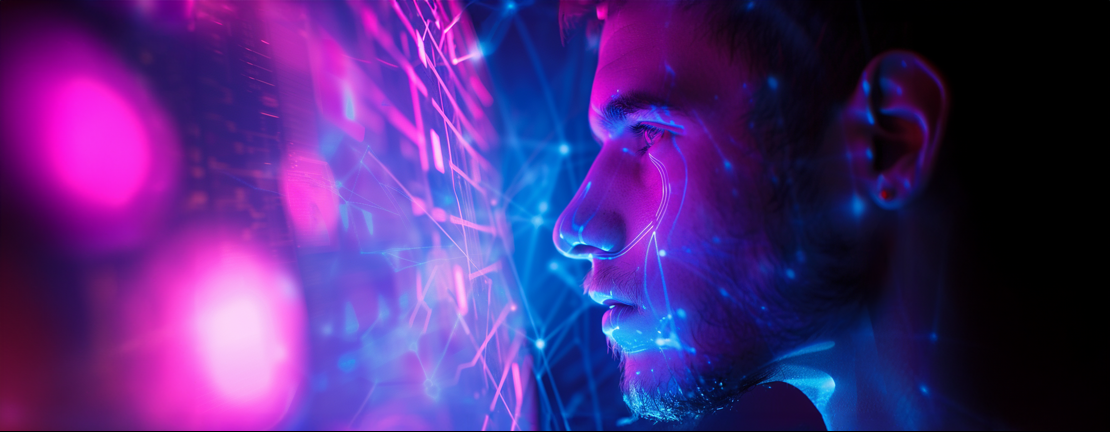Published 11 Jun 2024
Web 3.0: The Next Generation of the Internet

The internet has come a long way since its inception, evolving from a simple, static network of web pages (Web 1.0) to a dynamic, interactive, and user-generated content-driven platform (Web 2.0). As we continue to push the boundaries of innovation and technological advancements, a new era of the internet is emerging: Web 3.0.
Often referred to as the "Semantic Web" or the "Decentralized Web", Web 3.0 is poised to revolutionize the way we interact, share, and consume information online. Built on the foundations of blockchain technology, artificial intelligence, and the Internet of Things (IoT), this next-generation internet promises to be more intelligent, secure, and user-centric than ever before.
In this article, we'll embark on an exciting journey through the world of Web 3.0, exploring its key features, benefits, and challenges. Our aim is to provide you with a comprehensive understanding of this emerging technology and its potential to reshape the digital landscape.

Understanding Web 3.0: A Decentralized and Intelligent Internet
The term "Web 3.0" has been gaining traction in recent years, sparking curiosity and excitement among tech enthusiasts and industry experts alike. But what exactly is Web 3.0, and how does it differ from the internet we know and use today?
At its core, Web 3.0 is a vision for a more intelligent, decentralized, and user-centric internet. This new iteration of the web is built on the foundations of blockchain technology, which enables secure, transparent, and tamper-proof transactions and data storage. By leveraging the power of decentralization, Web 3.0 aims to create an internet that is free from the control and influence of centralized authorities, such as governments and corporations.
A key component of Web 3.0 is the concept of the "Semantic Web". Coined by World Wide Web inventor Tim Berners-Lee, the Semantic Web refers to an extension of the current web, in which information is given well-defined meaning, better enabling computers and people to work in cooperation. In the context of Web 3.0, the Semantic Web plays a crucial role in making the internet more intelligent and capable of understanding and processing complex data and queries.
Another essential aspect of Web 3.0 is the importance of data ownership and privacy. In the current Web 2.0 landscape, users often surrender their personal data to large corporations in exchange for access to services and platforms. This centralization of data has led to numerous privacy breaches and the misuse of personal information. Web 3.0, on the other hand, seeks to empower users by giving them full control over their data, ensuring that their privacy and security are always protected.

Key Features of Web 3.0: A Glimpse into the Future of the Internet
Web 3.0 represents a significant shift from the current state of the internet, with several defining characteristics that set it apart. In this section, we'll explore the main features of Web 3.0.
Decentralization
At the heart of Web 3.0 lies the principle of decentralization. Unlike the current web, which relies on centralized servers and authorities, Web 3.0 leverages blockchain technology to create a decentralized network of nodes. This eliminates the need for intermediaries and ensures that no single entity has control over the flow of information or transactions.
Interoperability
Web 3.0 aims to create a seamless and interconnected web experience by enabling different platforms, applications, and devices to communicate and share data with one another. This interoperability allows for a more integrated and efficient internet ecosystem, where users can easily access and interact with various services without being confined to specific platforms or walled gardens.
Trustlessness
In the context of Web 3.0, trustlessness refers to the ability of users to engage in transactions and interactions without the need for trust in a central authority or intermediary. This is achieved through the use of blockchain technology, which ensures the transparency, security, and immutability of data and transactions. As a result, users can confidently participate in the digital economy, knowing that their information and assets are protected.
User-centricity
Web 3.0 places a strong emphasis on user empowerment and control. In contrast to the current web, where users often relinquish their data and privacy to centralized entities, Web 3.0 aims to give users full ownership and control over their data. This user-centric approach ensures that individuals can decide how their information is used and shared, fostering a more transparent and trustworthy digital environment.
By understanding these key features of Web 3.0, we can begin to appreciate the transformative potential of this next-generation internet, which promises to reshape the way we interact, share, and consume information online.

Benefits of Web 3.0: Unlocking a World of Opportunities
The transition from Web 2.0 to Web 3.0 is not just a technological shift; it's a transformation that holds the potential to significantly impact users, businesses, and society as a whole. In this section, we'll explore some of the key benefits of Web 3.0.
Enhanced Data Security and Privacy
The decentralized architecture and user-centric focus of Web 3.0 address some of the most pressing concerns of the current internet, such as data breaches and privacy violations. By empowering users with full control over their data and employing advanced cryptographic techniques, Web 3.0 ensures that individuals' information is securely stored and shared, fostering a more trustworthy digital environment.
Improved Search and Discovery of Information
The Semantic Web, an integral part of Web 3.0, enables a more sophisticated and accurate understanding of information by machines. This, in turn, leads to improved search results and a more efficient discovery of relevant content. As a result, users can expect a more intuitive and seamless browsing experience, while businesses can benefit from more targeted and effective marketing strategies.
Greater Innovation and Competition through Decentralization
The decentralized nature of Web 3.0 eliminates the need for costly intermediaries and allows for permissionless innovation, leveling the playing field for businesses and entrepreneurs. This fosters a more competitive and dynamic market, where new ideas and business models can flourish, ultimately driving economic growth and prosperity.
More Efficient and Transparent Transactions
With the integration of blockchain technology in Web 3.0, transactions become faster, cheaper, and more secure, enabling the creation of new digital assets and financial instruments. The transparency and immutability of blockchain-based systems ensure that all parties involved in a transaction have access to the same, accurate information, reducing the potential for disputes and fraud.
By harnessing these benefits, Web 3.0 has the potential to revolutionize the way we interact, do business, and access information, paving the way for a more secure, efficient, and inclusive digital future.

Challenges and Limitations of Web 3.0
While the potential benefits of Web 3.0 are undeniably exciting, it's important to acknowledge the obstacles and limitations that this next-generation internet may face. In this section, we'll explore some of the challenges that Web 3.0 needs to address.
Scalability and Performance Issues
As more users and applications join the decentralized web, the demand for scalable and high-performance solutions becomes increasingly important. While current blockchain technology has made significant strides in recent years, there are still concerns about its ability to handle large-scale, high-frequency transactions efficiently. Addressing these scalability and performance challenges is crucial for Web 3.0 to reach its full potential.
Regulatory and Legal Hurdles
The decentralized nature of Web 3.0 and its reliance on blockchain technology present unique regulatory and legal challenges. As governments and regulatory bodies grapple with how to oversee and control this new digital landscape, there may be uncertainty and potential roadblocks for the widespread adoption of Web 3.0 technologies. Collaboration between industry stakeholders, policymakers, and regulators is essential to navigate these challenges and create a supportive environment for innovation.
User Adoption and Education
Transitioning from the familiar Web 2.0 environment to the decentralized and user-centric Web 3.0 may require a significant learning curve for many users. To ensure widespread adoption, it's crucial to develop user-friendly interfaces and educational resources that make Web 3.0 accessible and understandable for people of all backgrounds and skill levels.
The Potential for New Forms of Centralization
While Web 3.0 aims to create a more decentralized and democratic digital landscape, there's a risk that new forms of centralization may emerge. For instance, powerful actors in the Web 3.0 ecosystem, such as large token holders or dominant dApps, could potentially consolidate power and influence. To mitigate this risk, it's essential to design Web 3.0 systems with robust decentralization mechanisms and safeguards against centralization.
By addressing these challenges and limitations, the Web 3.0 community can work together to build a more secure, efficient, and inclusive digital future for everyone.

Real-World Examples and Applications of Web 3.0
Web 3.0 is not just a theoretical concept; it's already being applied and integrated into various projects and platforms, showcasing its transformative potential. In this section, we'll explore some real-world examples of Web 3.0 technologies in action.
Decentralized Finance (DeFi)
DeFi is a rapidly growing sector within the blockchain and cryptocurrency space, aiming to disrupt traditional financial services by leveraging Web 3.0 technologies. DeFi platforms, such as Compound, Aave, and Uniswap, enable users to lend, borrow, and trade digital assets in a decentralized, transparent, and secure manner, bypassing the need for intermediaries like banks or brokers.
Non-Fungible Tokens (NFTs)
NFTs are unique, indivisible digital tokens that represent ownership and authenticity of a specific item or piece of content, such as art, collectibles, or in-game assets. By utilizing Web 3.0 technologies, NFTs enable creators to monetize their work more effectively, while also providing collectors and enthusiasts with a new way to engage with and invest in digital content. Platforms like OpenSea, Rarible, and NBA Top Shot are popular examples of NFT marketplaces.
Decentralized Autonomous Organizations (DAOs)
DAOs are decentralized, community-governed organizations that operate on Web 3.0 principles, such as transparency, security, and decentralization. By leveraging blockchain technology and smart contracts, DAOs enable members to collectively make decisions, manage resources, and coordinate actions without the need for a centralized authority or hierarchical structure. Examples of DAOs include MakerDAO, which governs the Maker Protocol and Dai stablecoin, and the decentralized content platform, Steemit.
Blockchain-Based Identity and Reputation Systems
Web 3.0's emphasis on user-centricity and data security paves the way for the development of blockchain-based identity and reputation systems. These systems enable users to securely and privately manage their digital identities, as well as build and maintain their reputations across various platforms and applications. Examples of such systems include uPort, which provides users with a self-sovereign identity solution, and Civic, which offers a decentralized identity verification and management platform.
These real-world examples and applications of Web 3.0 technologies demonstrate the immense potential of this next-generation internet, which is poised to revolutionize the way we interact, transact, and engage with the digital world.

Conclusion
In this article, we've explored the key features, benefits, and challenges of Web 3.0, the next generation of the internet. We've seen how its decentralized architecture, emphasis on user-centricity, and integration of blockchain technology have the potential to revolutionize the way we interact, transact, and engage with the digital world.
From enhanced data security and privacy to improved search and discovery of information, Web 3.0 promises to address many of the shortcomings of the current internet. Moreover, its potential to foster greater innovation, competition, and efficiency through decentralization could have far-reaching implications for businesses and society as a whole.
However, it's important to acknowledge the challenges and limitations that Web 3.0 may face, such as scalability and performance issues, regulatory and legal hurdles, user adoption and education, and the potential for new forms of centralization.
As we stand on the cusp of this transformative shift, it's crucial for all of us to stay informed and engaged with the development of Web 3.0. By understanding its potential and working together to overcome the challenges, we can ensure that this next-generation internet delivers on its promise to create a more secure, efficient, and inclusive digital future for everyone.
Read More




 Get RateX Pro
Get RateX Pro

 06 Jun 2024
06 Jun 2024
